
Scoparia panopla is a species of moth in the family Crambidae. It is endemic to New Zealand.

Scoparia nomeutis is a moth in the family Crambidae. It was named by Edward Meyrick in 1884. Meyrick gave a description of this species in 1885. It is endemic to New Zealand.

Scoparia acharis is a moth of the family Crambidae. It was named by Edward Meyrick in 1884. This species is endemic to New Zealand and has been observed in both the North and South Islands. The preferred habitat of this species is native forest and in the South Island S. acharis has been observed in beech forest. The larval host of this species is moss. Adults are most commonly on the wing from November to January, although this species has been observed from October until March.

Scoparia astragalota is a species of moth in the family Crambidae. This species is endemic to New Zealand.
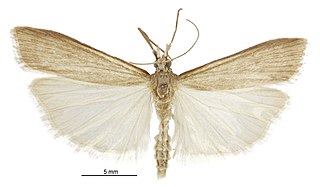
Scoparia augastis is a moth in the family Crambidae. It was described by Edward Meyrick in 1907. This species is endemic to New Zealand.

Scoparia chalicodes is a species of moth in the family Crambidae. This species was named by Edward Meyrick in 1884. Meyrick gave a fuller description of this species in 1885. S. chalicodes is endemic to New Zealand.
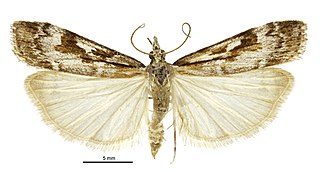
Scoparia cyameuta is a moth of the family Crambidae. It was named by Edward Meyrick in 1884. Meyrick gave a description of the species in 1885. S. cyameuta is endemic to New Zealand.

Scoparia encapna is a moth of the family Crambidae. It was described by Edward Meyrick in 1888. It is endemic to New Zealand.
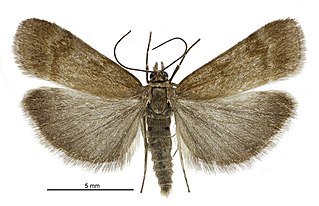
Scoparia ergatis is a species of moth in the family Crambidae. It is endemic to New Zealand.

Scoparia lychnophanes is a species of moth in the family Crambidae. It is endemic to New Zealand.
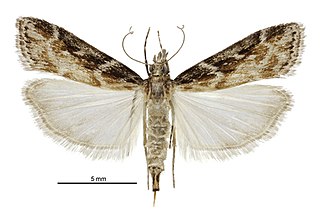
Scoparia molifera, also known as the leather-leaf Scoparia, is a species of moth of the family Crambidae. This species was first described by Edward Meyrick in 1926 and is endemic to New Zealand. It can be found in the North and South Islands. The larvae of this species make silk tunnels from which they mine the leaves of their host, the leather-leaf fern Pyrrosia eleagnifolia. Adult moths are on wing from December to February and are attracted to light.

Scoparia petrina is a species of moth in the family Crambidae. It was named by Edward Meyrick in 1884. Meyrick gave a description of the species in 1885. It is endemic to New Zealand.

Scoparia tetracycla is a species of moth in the family Crambidae. It is endemic in New Zealand.
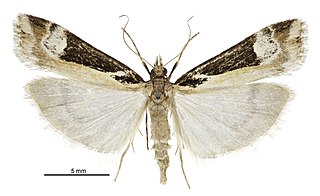
Scoparia trapezophora is a species of moth in the family Crambidae. It is endemic in New Zealand.
Scoparia vulpecula is a species of moth in the family Crambidae. It is endemic to New Zealand.

Antiscopa epicomia is a moth in the family Crambidae. This species was first described by Edward Meyrick. It is endemic to New Zealand and can be found throughout the country including on Auckland Island, Campbell Island, and the Kermadec Islands. It inhabits native forest, preferring damp, shaded forest ravines. Adults are variable in size and colouration and are on the wing all year but most frequently from October until March.

Eudonia leptalea is a moth in the family Crambidae. This species is endemic to New Zealand, including the Chatham Islands.

Scoparia niphospora is a moth in the family Crambidae. It is endemic to New Zealand.
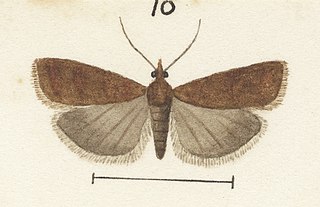
Scoparia parachalca is a moth in the family Crambidae. It was described by Edward Meyrick in 1901. It is endemic to New Zealand.
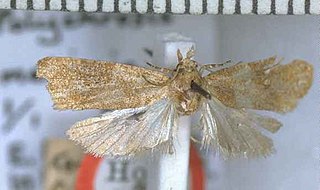
Polychrosis meliscia is a species of moth of the family Tortricidae. It is found in New Zealand at the Kermadec Islands.


















